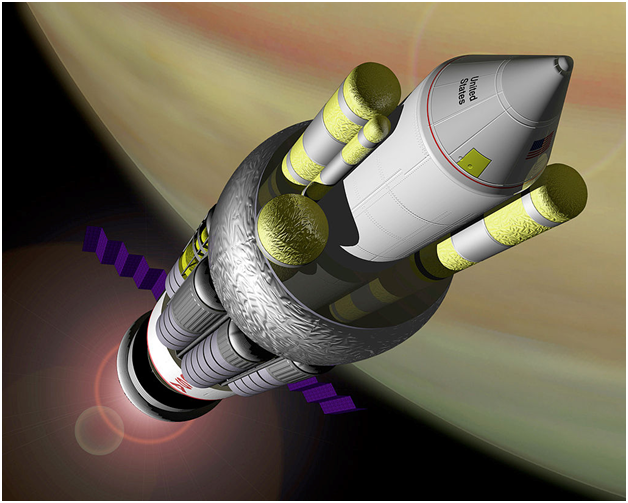Early Ideas for and Tests of the Use of Nuclear Explosions in Space
I have made it clear in many posts that I do not think that nuclear power is appropriate for massive generation of commercial electricity. There are many reasons for my opinion that I have detailed over the past two years. That is not to say that there are not appropriate uses for nuclear materials. A large number of medical diagnostic and therapy procedures depend on radioactive isotopes. There are many industrial applications as well. However, even these uses have problems from production to disposal that can be problematic. One use for radioactive materials that does not have disposal problems are energy sources for space probes although there is a danger of pollution if a launch vehicle with radioactive materials on board explodes on launch or crashes back to Earth. While current use of nuclear materials on spacecraft is in the form of nuclear batteries that supply electricity for equipment and ionic engines, there is a history of projects aimed at the explosion of nuclear bombs in space for propulsion and research.
The early history of nuclear devices and space began at the dawn of the Atomic Age in the 1950s. In 1957, there was a series of nuclear tests called Operation Plumbbob at the U.S. Nevada nuclear test site. There were twenty nine explosions that were used for a series of experiments on the effects of nuclear explosions on materials, humans, structures and equipment. During an underground test known as Pascal-B, in August of 1957, a four inch thick steel cap weighing hundreds of pounds was blown off and may have been launched into solar orbit. Although unintended, nonetheless, this may have been a successful launch of a payload from the surface of the Earth via nuclear explosion.
Project A119 was a plan developed in 1958 to send a nuclear bomb to the Moon and detonated it on the surface. Apart from the scientific knowledge that might have been gained, there was also the idea that a nuclear detonation on the Moon that would be visible from the Earth would be a warning to the enemies of the United States. The project as never carried out and its existence was only revealed in 2000.
The idea of using nuclear bombs for propulsion of interplanetary spacecraft was first proposed by Stanislaw Ulam, a mathematician working on nuclear weapons development in Los Alamos, New Mexico in 1947. A formal project development was undertaken in 1958 under the name of Project Orion. First proposals for launching a spacecraft with nuclear bombs were scrapped because of the fallout that would result. Later proposals were to launch with conventional rockets or to assemble in space. Nuclear propulsion would only be used in space. The project was cancelled following the Partial Test Ban Treaty of 1963. However, the development of designs for using nuclear explosions to propel spacecraft have continued to be developed with more recent systems using explosive pellets instead of large nuclear bombs. Both fission and fusion systems have been considered.
Project Orion Concept Art:
